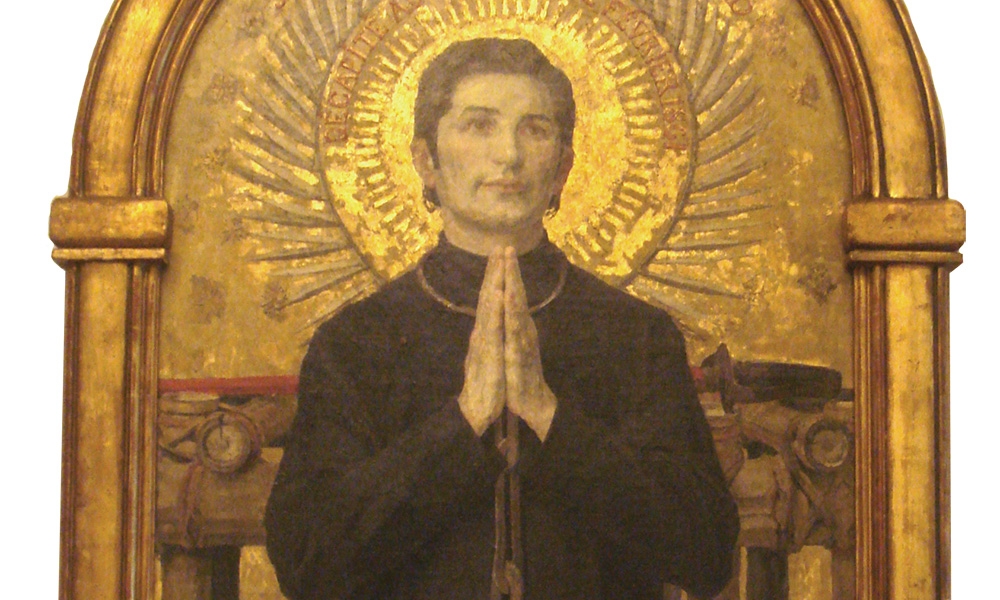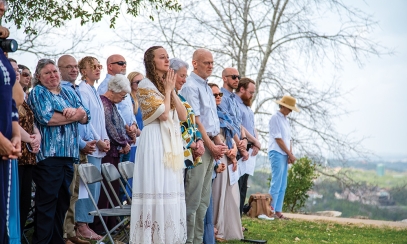
French saint faced violent persecution in Vietnam
Théophane Vénard was born in 1829, the son of a village school master, in Poitou, France. He joined the Society of Foreign Missions of Paris as a young man, transferring to it from the seminary of Poitiers Society. During his years in the seminary, Théophane wrote many letters home. Just before his ordination in 1852, he wrote a letter of advice to his younger brother telling him, “Try to do each day’s work steadily and joyfully. Be happy, and truly joyous. A Christian’s life should be a perpetual jubilee, a prelude to the feats of eternity.” (Letters from Saints to Sinners, John Cumming)
Théophane Vénard was born in 1829, the son of a village school master, in Poitou, France. He joined the Society of Foreign Missions of Paris as a young man, transferring to it from the seminary of Poitiers Society. During his years in the seminary, Théophane wrote many letters home. Just before his ordination in 1852, he wrote a letter of advice to his younger brother telling him, “Try to do each day’s work steadily and joyfully. Be happy, and truly joyous. A Christian’s life should be a perpetual jubilee, a prelude to the feats of eternity.” (Letters from Saints to Sinners, John Cumming)
Matthew Bunson writes in John Paul II’s Book of Saints that Théophane then sailed to Hong Kong where he studied languages and labored for 15 months. His next assignment was to an area called Tonkin, Vietnam.
This was a dangerous time in Tonkin where violent persecution was raging against the church. Théophane devoted himself to the spiritual needs of Vietnamese Catholics and was forced to hide in Christian villages and to conduct his ministries at night. Bunson wrote that he also had some serious physical problems but managed to elude the Vietnamese authorities who searched for missionaries.
Father Clifford Stevens writes in The One Year Book of Saints that Théophane sought refuge later in Hanoi, where he hid in caves, in the hulls of fishing boats and in some homes of Catholics. He managed to maintain this labor for almost four years before he was captured in 1860. Even while he was ministering and hiding from the authorities, Théophane, always a prolific letter writer, wrote many letters to his family. His topics included the church, vocations, paganism, missions, travels, joy and death and are described by Jill Haak Adels in an anthology titled The Wisdom of the Saints.
Théophane wrote to a friend on May 10, 1860, describing what it was like living in the dark in Tonkin for three months with three missionaries, one of whom was a bishop.
He was tried and condemned to death and was put in a cage where he was abused and tortured. In a letter to his father he described his coming martyrdom as “the spring flower which the Master of the garden gathers for his pleasure.”
On Feb. 2, 1861, Théophane was carried to the site of his execution, singing hymns on his way. Bunson writes that after he was slain, his head was placed on a pole and exhibited as a victory for the Vietnamese authorities. He was 31 years old. His remains were eventually transferred to a shrine in Paris. He was one of 116 who suffered martyrdom at the hands of the Vietnamese government officials.
Father Stephens described him as one of the shining young men of the Paris Mission Society who inspired the founding of other missionary societies such as Maryknoll and the Columban Fathers.
His letters and his example inspired the young Thérèse of Lisieux to volunteer for the Carmelite monastery at Hanoi. David Farmer writes in the Oxford Dictionary of Saints that she was unable to do that because of ill health.
Théophane was beatified in May 1909 and canonized in 1988. His feast day is Nov. 6.
Mary Lou Gibson is a freelance writer who loves to explore the lives of saints. She is a member of St. Austin Parish in Austin.



